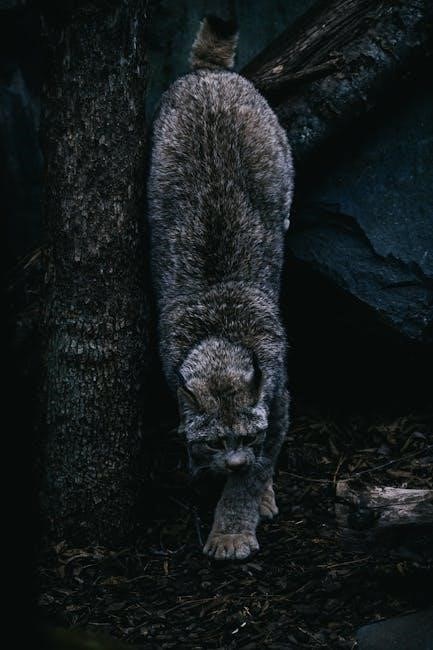
a lady’s guide to fortune hunting
“A Lady’s Guide to Fortune Hunting” by Sophie Irwin is a captivating Regency romance debut. Kitty Talbot, a spirited young woman, navigates the London Season to secure a wealthy husband and save her family from financial ruin. With sharp wit and determination, she challenges societal norms, engaging in a series of encounters, notably with Lord Radcliffe, who sees through her intentions; This novel blends humor with poignant insights into love, class, and ambition, offering a fresh take on the Regency genre.
1.1 Overview of the Novel
A Lady’s Guide to Fortune Hunting is a Regency romance novel that follows Kitty Talbot, a spirited and determined young woman navigating the societal pressures of 1810s England. With her family burdened by debt, Kitty embarks on a mission to secure a wealthy husband during the London Season. The novel blends witty dialogue, sharp observations of class, and a strong female lead, offering a fresh perspective on the Regency era. Sophie Irwin’s debut captures the tension between ambition and love, while its humor and charm make it a delightful read for fans of historical romance.
1.2 Author Sophie Irwin and Her Debut
Sophie Irwin makes a stellar debut with A Lady’s Guide to Fortune Hunting, showcasing her talent for blending humor, wit, and societal critique. Her writing captures the essence of Regency romance while infusing it with a modern flair, earning praise for its fresh perspective; Irwin’s ability to craft relatable characters and engaging dialogue has resonated with readers and critics alike, solidifying her place in the historical romance genre. This debut not only highlights her storytelling prowess but also sets the stage for future works, promising a bright literary career ahead.
1.3 Historical Context of Regency Romance
Set in the early 19th century, A Lady’s Guide to Fortune Hunting immerses readers in the opulent yet rigid world of Regency-era England. The novel highlights the societal pressures faced by women, particularly the imperative to secure marriages for financial stability. The London Season, a central backdrop, was a real historical phenomenon where eligible women sought husbands; Irwin’s portrayal captures the era’s grandeur and underlying tensions, offering a vivid glimpse into a time when social class and economic status dictated one’s future. This historical setting adds depth to Kitty’s journey, making her struggles and ambitions relatable and compelling.

Plot Summary
Kitty Talbot, a determined young woman, enters the London Season to secure a wealthy husband and save her family from ruin, encountering Lord Radcliffe, who challenges her ambitions.
2.1 Kitty Talbot’s Quest for a Fortune
Kitty Talbot, a spirited and unconventional heroine, embarks on a mission to secure a wealthy husband during the London Season. With her family burdened by debt, Kitty must act swiftly. Her determination and wit drive her to navigate the complexities of high society, using charm and cleverness to attract potential suitors. However, her plans are complicated by Lord Radcliffe, who sees through her mercenary intentions. Their dynamic, marked by tension and wit, underscores Kitty’s journey as she balances ambition with unexpected emotions, making her quest a blend of humor, heart, and societal critique.
2.2 The London Season and Its Significance
The London Season serves as the backdrop for Kitty Talbot’s quest, a societal event where young women seek advantageous marriages. It is a time of opulent balls, high-stakes social maneuvering, and rigid expectations. For Kitty, the Season represents a limited window of opportunity—just twelve weeks—to secure a wealthy husband and save her family from financial ruin. The pressure to succeed is immense, as failure could mean destitution for her siblings. The Season’s dynamics highlight the societal pressures on women, emphasizing marriage as an economic transaction rather than a romantic partnership. This setting underscores Kitty’s determined yet precarious journey.
2.3 The Role of Lord Radcliffe
Lord Radcliffe emerges as a pivotal figure in Kitty’s journey, embodying both a foil and a romantic interest. His sharp wit and discerning nature allow him to see through Kitty’s fortune-hunting intentions, creating an initial adversarial dynamic. However, as their interactions deepen, his rigid exterior softens, revealing a complex character grappling with his own societal expectations. Radcliffe’s role evolves from a skeptic to a key player in Kitty’s emotional and moral growth, challenging her to reflect on her choices. Their relationship becomes a central conflict, blending tension, humor, and eventual understanding, while highlighting themes of societal duty and personal desire.

Character Analysis
Kitty Talbot shines as an unconventional heroine, using wit and determination to navigate societal norms. Lord Radcliffe’s brooding nature contrasts with her spirited approach, while supporting characters add depth to the narrative.
3.1 Kitty Talbot: The Unconventional Heroine
Kitty Talbot is a refreshingly bold and determined protagonist, defying the traditional expectations of a Regency heroine. Her unapologetic approach to fortune hunting, driven by necessity, showcases her intelligence and resilience. With a sharp wit and unrelenting spirit, Kitty challenges societal norms, making her a standout character in the genre. Her journey through the London Season is a mix of humor, vulnerability, and strength, as she balances ambition with growing self-awareness. Kitty’s unconventional methods and unwavering resolve captivate readers, offering a modern twist on the classic Regency heroine.
3.2 Lord Radcliffe: The Brooding Male Lead
Lord Radcliffe is the quintessential brooding male lead, whose sharp intellect and dry wit make him a compelling counterpart to Kitty’s spirited nature. As the older brother of Kitty’s initial target, he is immediately aware of her intentions, yet finds himself drawn to her audacity. His reserved demeanor hides a complex character, whose interactions with Kitty are laced with tension and subtle humor. Radcliffe’s role in the story adds depth, as he challenges Kitty’s plans while revealing his own vulnerabilities, creating a dynamic that keeps readers engaged and invested in their evolving relationship.
3.3 Supporting Characters and Their Roles
The supporting characters in “A Lady’s Guide to Fortune Hunting” add depth and humor to Kitty’s journey. Her younger sisters, dependent on her success, represent the stakes of her mission. Lord Radcliffe’s mother, Lady Radcliffe, embodies societal expectations, while Kitty’s targets and their families highlight the absurdities of the marriage market. Additionally, characters like Lady Eliza Somerset, who later stars in the sequel, offer glimpses of alternative paths and societal pressures. These figures enrich the narrative, providing both tension and humor as they navigate the complexities of fortune hunting and love in the Regency era.

Themes in the Novel
The novel explores themes of fortune hunting, societal expectations, and personal ambition, highlighting the challenges faced by women in Regency-era society, balancing love with practicality.
4.1 TheTheme of Fortune Hunting in Society
4.1 The Theme of Fortune Hunting in Society
In “A Lady’s Guide to Fortune Hunting,” fortune hunting emerges as a central theme, reflecting the societal pressures faced by women in the early 19th century. Kitty Talbot’s journey illustrates the stark reality where marriage was often a financial transaction rather than a romantic partnership; The novel highlights how women, particularly those from impoverished backgrounds, were compelled to secure husbands with wealth to ensure their families’ survival. This theme is portrayed through Kitty’s strategic navigation of the London Season, blending wit and determination. The societal norms that drove such practices are critiqued, offering a nuanced exploration of economic and gender dynamics.
4.2 Marriage and Love in the Regency Era
The novel vividly portrays the tension between marriage as a practical arrangement and the pursuit of romantic love in the Regency Era. Kitty Talbot’s journey underscores the societal expectation that women marry for security rather than affection. While Kitty initially views marriage as a means to solve her financial woes, her interactions with Lord Radcliffe reveal the complexities of balancing practicality with emotional connection. The story critiques the era’s rigid norms while exploring the possibility of love flourishing amidst societal pressures, offering a nuanced portrayal of relationships in a time where marriage was often a calculated endeavor.
4.3 Social Class and Financial Struggles

The novel delves into the stark realities of social class and financial instability in the Regency Era. Kitty Talbot’s family, burdened by debt, exemplifies the precarious existence of those teetering on the edge of genteel poverty. The pressures of maintaining social standing while facing economic ruin are vividly portrayed, highlighting the limited options available to women like Kitty. Her journey through the London Season exposes the rigid class divide, as she navigates a world where marriage is often a means of securing financial stability rather than a union of hearts. The novel critiques the era’s societal norms while offering a compelling commentary on survival and identity.
Behind the Scenes
Behind the scenes, Sophie Irwin meticulously researched the Regency era, blending humor with historical accuracy. Her personal experiences shaped Kitty’s journey, creating an authentic and engaging narrative.
5.1 Sophie Irwin’s Writing Process
Sophie Irwin’s writing process for A Lady’s Guide to Fortune Hunting involved meticulous research into the Regency era, ensuring historical accuracy while infusing modern wit. She crafted Kitty Talbot as a bold, unconventional heroine, balancing humor with emotional depth. Irwin’s dialogue-driven approach brought characters to life, particularly in the dynamic between Kitty and Lord Radcliffe. Her debut novel reflects a passion for blending historical romance with relatable themes, showcasing her ability to weave engaging narratives that resonate with contemporary readers while staying true to the period.
5.2 Historical Research and Accuracy
Sophie Irwin’s commitment to historical accuracy in A Lady’s Guide to Fortune Hunting is evident through her meticulous research into the Regency era. She meticulously recreated the social norms, etiquette, and settings of 1810s London, ensuring authenticity. Irwin delved into primary sources to portray the London Season accurately, capturing the intricacies of high society. Her attention to detail in clothing, language, and cultural practices enhances the novel’s immersive quality. While creative liberties were taken, Irwin remained faithful to the era’s spirit, particularly in depicting the limited roles of women and the societal pressures they faced. This balance of fact and fiction enriches the narrative, making it both historically grounded and engaging.
5.3 The Inspiration Behind the Story
Sophie Irwin drew inspiration from classic Regency romances and the works of Jane Austen, blending witty dialogue with modern sensibilities. She aimed to create a strong, unconventional heroine in Kitty Talbot, reflecting the resilience of women in a society governed by strict norms. Irwin’s own fascination with the social dynamics of the early 19th century and the challenges faced by women in securing financial stability fueled the story. The novel’s lighthearted yet poignant tone was influenced by Irwin’s desire to explore themes of love, ambition, and societal expectations through a fresh, humorous lens, making it relatable to contemporary readers.

Reception and Reviews
“A Lady’s Guide to Fortune Hunting” has captivated readers with its blend of humor, heart, and sharp wit. Critics and readers alike praise Kitty’s spirited journey…
6.1 Critical Acclaim and Praise
Critics have hailed A Lady’s Guide to Fortune Hunting as a sparkling debut, praising its sharp wit, dynamic characters, and fresh take on the Regency romance genre. Reviewers highlight Kitty Talbot’s spirited determination and the novel’s ability to blend humor with heartfelt moments. The dialogue is frequently commended for its brilliance and modern flair, drawing comparisons to Jane Austen’s works but with a contemporary edge. Many applaud Sophie Irwin’s ability to craft a story that feels both historically grounded and refreshingly original, making it a standout in the historical romance category.
6.2 Reader Responses and Ratings
Readers have enthusiastically embraced A Lady’s Guide to Fortune Hunting, with many awarding it 5-star ratings. Fans praise Kitty Talbot’s witty determination and the novel’s lighthearted yet insightful portrayal of Regency society. The enemies-to-lovers dynamic between Kitty and Lord Radcliffe has been particularly well-received, with readers appreciating the banter and chemistry. While some note the story isn’t overly whimsical, the majority celebrate its modern flair and relatable heroine. The book’s ability to balance humor with deeper themes has resonated widely, making it a favorite among historical romance enthusiasts and sparking eager anticipation for Sophie Irwin’s next work.
6.3 Comparisons to Other Regency Romances
A Lady’s Guide to Fortune Hunting has drawn comparisons to works like Julia Quinn’s Bridgerton series, praised for its modern wit and strong female lead. While reminiscent of classic Regency romances, Sophie Irwin’s debut stands out with its fresh, dynamic voice. Kitty Talbot’s unapologetic determination contrasts with more traditional heroines, offering a unique perspective on the genre. The novel’s blend of humor, sharp dialogue, and societal commentary aligns it with contemporary historical romances, making it a standout in the Regency genre while paying homage to its roots.

The Sequel: “A Lady’s Guide to Scandal”
Sophie Irwin’s sequel, A Lady’s Guide to Scandal, follows Lady Eliza Somerset, a widow navigating wealth and duty, exploring themes of identity and societal expectations.

7.1 Continuing the Story of Lady Eliza Somerset
Lady Eliza Somerset, a newly widowed aristocrat, inherits a vast fortune, thrusting her into a world of duty and societal scrutiny. Her journey explores widowhood, identity, and the burdens of wealth. Eliza’s story intertwines with Kitty Talbot’s legacy, as both women navigate love, class, and independence in Regency England. The sequel delves into themes of duty versus desire, offering a nuanced portrayal of a woman balancing her late husband’s expectations with her own aspirations. Irwin masterfully weaves historical detail with emotional depth, creating a compelling narrative.
7.2 Themes of Widowhood and Duty
The sequel, A Lady’s Guide to Scandal, delves into widowhood and duty through Lady Eliza Somerset’s story. recently widowed, Eliza is burdened by societal expectations and the weight of her late husband’s legacy. The novel explores the constraints placed on women in mourning, balancing personal grief with public duty. Themes of financial responsibility, social standing, and the pressures of remarriage are intricately woven into Eliza’s journey. Irwin examines the tension between fulfilling familial obligations and pursuing individual desires, offering a poignant critique of the limited agency women had in the Regency era.
7.3 The Connection to the First Book
A Lady’s Guide to Scandal is deeply connected to its predecessor, A Lady’s Guide to Fortune Hunting, through its exploration of societal expectations and financial pressures. While the first book focuses on Kitty Talbot’s quest for a fortune, the sequel introduces Lady Eliza Somerset, a character whose story expands the world of Regency romance. Both novels highlight women navigating a society governed by strict rules, where marriage and wealth are intertwined with duty and survival. The connection lies in their shared themes of resilience, societal constraints, and the pursuit of independence, offering a cohesive yet fresh narrative within the same universe.

8.1 The Legacy of “A Lady’s Guide to Fortune Hunting”

A Lady’s Guide to Fortune Hunting has left a lasting mark on the Regency romance genre, praised for its sharp wit and modern twist on classic themes. Kitty Talbot’s unconventional journey resonated with readers, earning critical acclaim and a loyal fanbase. The novel’s success has been likened to a revival of Jane Austen’s style, blending humor with societal commentary. Its impact is evident in the growing interest in Regency romances, inspiring new adaptations and sequels, such as A Lady’s Guide to Scandal. This debut solidified Sophie Irwin as a fresh voice in historical fiction.
8.2 The Future of Regency Romance Genre
The Regency romance genre is experiencing a vibrant resurgence, thanks in part to works like A Lady’s Guide to Fortune Hunting. Its blend of wit, strong female leads, and historical charm has captivated readers, inspiring new authors and adaptations. The success of Bridgerton and similar novels highlights the genre’s enduring appeal; With its fresh perspective and modern flair, Regency romance continues to evolve, attracting both longtime fans and new readers. This revitalization ensures the genre remains a staple in historical fiction, with its future looking bright and full of possibilities for innovative storytelling.
8.3 Final Thoughts on Kitty’s Journey
Kitty Talbot’s journey in A Lady’s Guide to Fortune Hunting is a testament to resilience and wit. Driven by necessity, she navigates the complexities of the London Season with determination, challenging societal norms. Her interactions with Lord Radcliffe reveal a deeper complexity, blending humor with emotional depth. Ultimately, Kitty’s story is one of self-discovery and growth, as she learns to balance ambition with authenticity. Her character leaves a lasting impression, embodying the spirit of an unconventional heroine in a world governed by strict rules. Kitty’s journey is a delightful and inspiring exploration of love, identity, and societal expectations.
Related posts:
Archives
Calendar
| M | T | W | T | F | S | S |
|---|---|---|---|---|---|---|
| 1 | 2 | 3 | 4 | 5 | 6 | 7 |
| 8 | 9 | 10 | 11 | 12 | 13 | 14 |
| 15 | 16 | 17 | 18 | 19 | 20 | 21 |
| 22 | 23 | 24 | 25 | 26 | 27 | 28 |
| 29 | 30 | 31 | ||||
Leave a Reply
You must be logged in to post a comment.